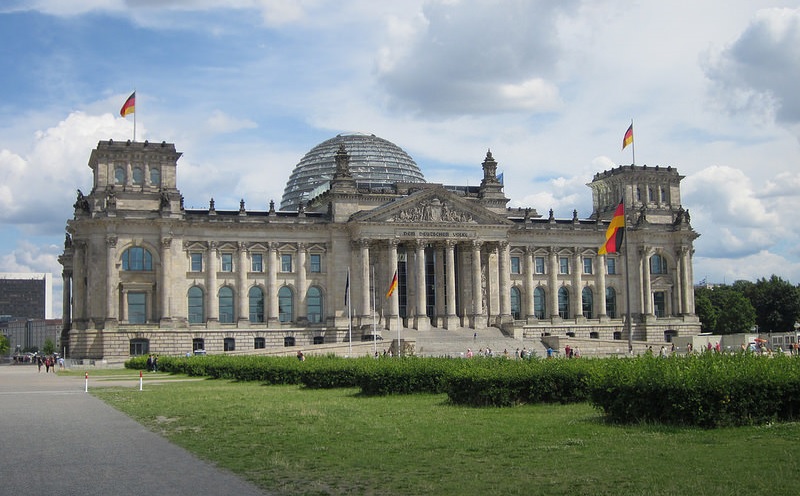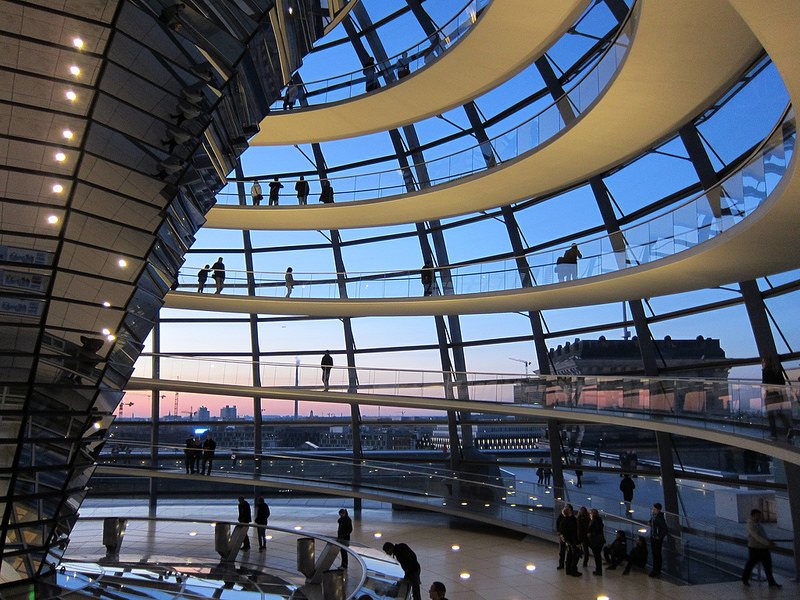Norman Foster designed the new dome for the Reichstag parliament building in Berlin, completed in 1999. It is a symbol of the reunification of Germany after WW2. The dome is transparent and allows the people to walk above the government, symbolizing transparency in government.
Democracy – Similar to Foster’s London City Hall, a swirling staircase rises inside a full glass dome structure. The people rise above the offices of government. Hegel’s philosophy of social development also can be seen, as the people are restrained by the envelope of the dome yet are above the rule of law which is developed inside.
Brightness – Concave mirrors direct natural sunlight from the dome and into a skylight to illuminate the parliament chamber below. The horn-shaped stack of mirrors directs considerable light into the chamber and makes it a bright cheery place, which was a major demand of local lawmakers.
History – Paul Wallot designed the original Reichstag in 1894. It famously caught fire in 1933 and was used as a symbol of the fight against Communism. It was badly damaged in 1945, and after the war Modernist Paul Baumgarten stripped the building of all elegance and decoration. But it was later built back up for the Reunification of Germany ceremony in 1990. Graffiti, scars, dreary colors, and elaborate decoration from this original building remain.
Video: Norman Foster presents Architecture Of The Common Ground
Essay: Reichstag Dome As Subversion Of Architectural Symbols
Book
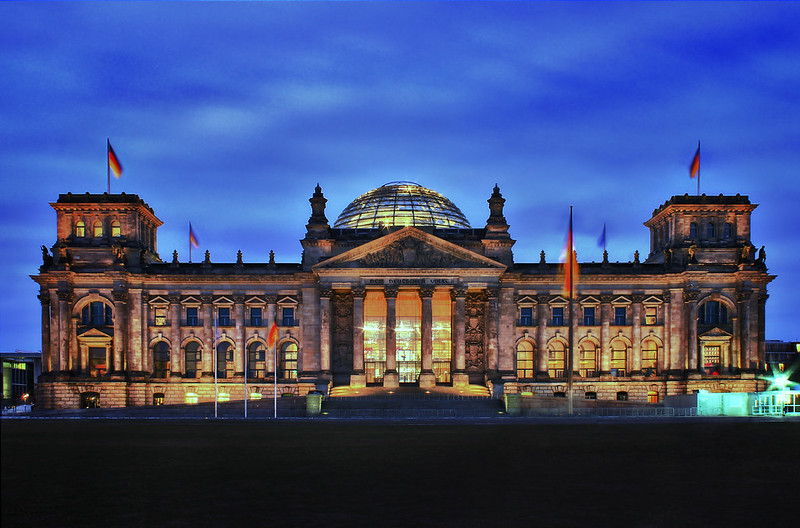
(PK Fotografie– flickr/creative commons license)
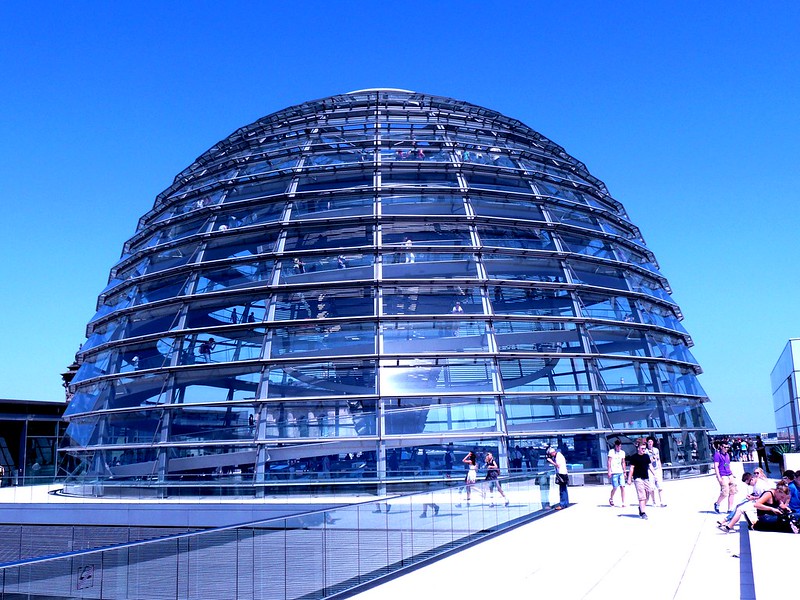
(photosteve101– flickr/creative commons license)

(Fulvio’s photos– flickr/creative commons license)
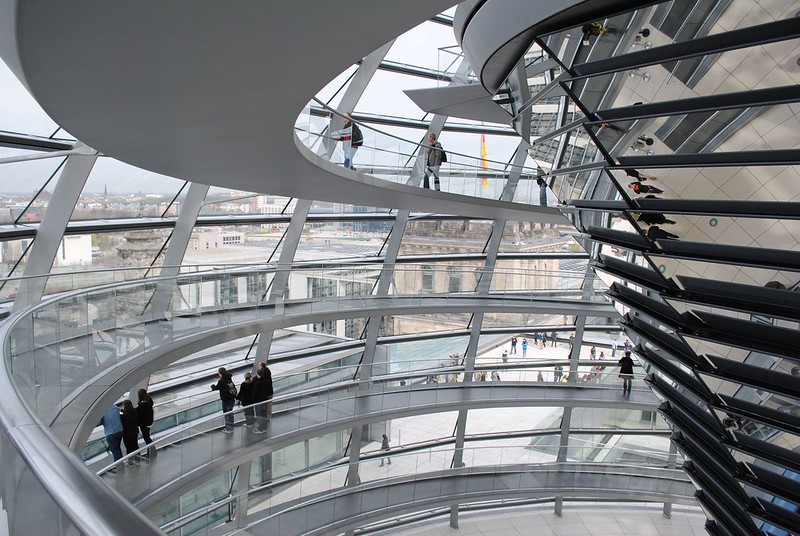
(Oh-Berlin.com– flickr/creative commons license)

(Wolfgang Staudt– flickr/creative commons license)
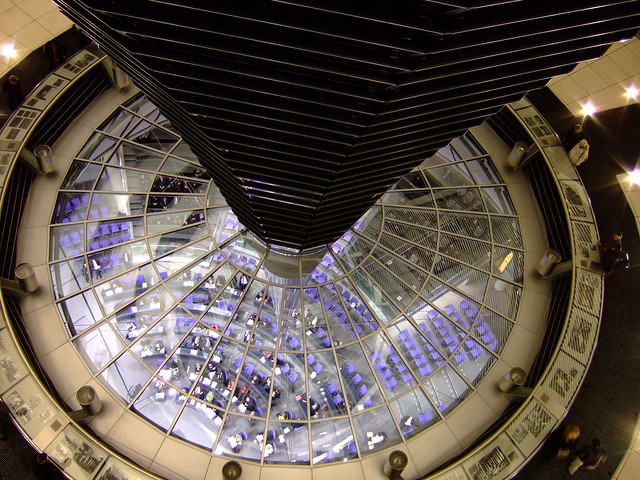
(marfis75– flickr/creative commons license)
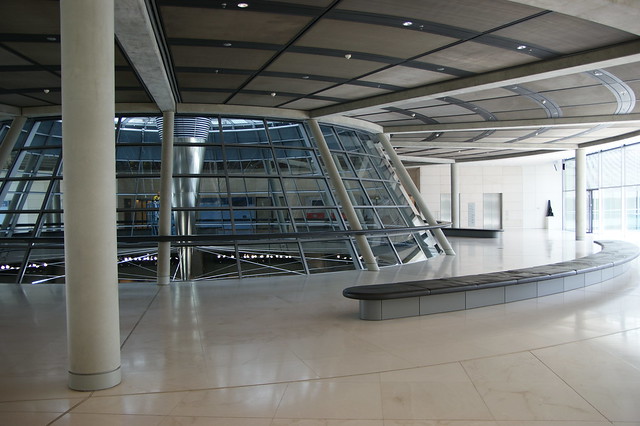
(twicepix– flickr/creative commons license)

